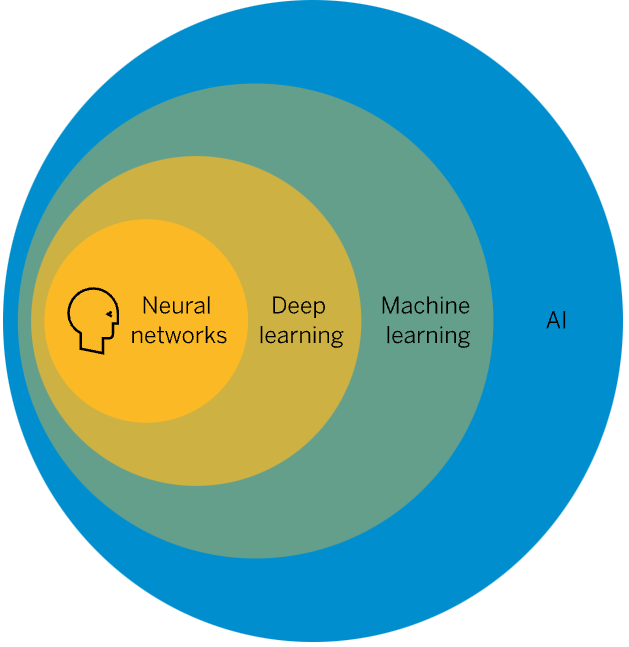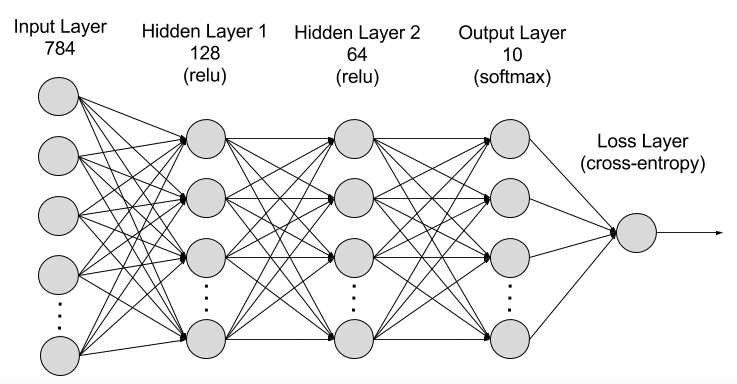AI Engineering Guide
In 2022, with the announcement of the ChatGPT product by the artificial intelligence manufacturer OpenAI, the role of artificial intelligence in our lives began to accelerate and today we can see that this effect has spread to every field. There are many artificial intelligence products and the intended use of these products continues to be offered in a different way. The companies that offer the relevant AI (artificial intelligence) tools are working to create a seamless product for the target audience by presenting the product at the right standards thanks to artificial intelligence engineers. In this content, we will explain artificial intelligence engineers and artificial intelligence engineering, which play an active role in the relevant tools, in all details. Then let's start by understanding the purpose of artificial intelligence engineering and what it does.
What is Artificial Intelligence Engineering?
Artificial intelligence engineering is an engineering field that tries to give machines the ability to think, perceive and solve problems like humans. In this field, elements such as computer systems, robots, etc. are given capabilities in situations that require human intelligence. These abilities can be as follows:
- Speech and natural language processing skills
- Image and voice recognition
- Machine learning
- Problem solving
- Decision making

In order to bring these abilities to items such as computer systems or robots, artificial intelligence engineers use engineering intelligence in developing complex algorithms and models, using software and hardware components in an integrated structure, and training the machine with a significant amount of data. For example, artificial intelligence engineers have developed a voice recognition system, making voice assistants on phones and creating this system with artificial intelligence engineering.
What Does an Artificial Intelligence Engineer Do?
The main goal of artificial intelligence engineers is to make machines and computer programmes intelligent. They teach these programmes to think and make decisions like humans. Artificial intelligence engineers, who aim to provide outputs that can imitate human intelligence in multiple aspects, are people who produce computer programmes that can think and decide like humans. Artificial intelligence engineers aim to provide the right output within a subset framework by teaching computers to speak, understand pictures, solve problems.
For example, an artificial intelligence engineer can make a robot programme to help with housework. He can teach this robot to wash the dishes, iron, sweep the floor. Thus, the robot can do housework in an intelligent way. Or an artificial intelligence engineer can programme the voice assistant on the phone and teach the voice assistant to speak so that it can answer when we ask questions.
To give another example, you buy a robot dog and command it to 'sit'. But the robot dog only barks, it does not sit. Because no one has taught it to sit. Here, an artificial intelligence engineer can programme the robot dog to detect the sit command with the help of cameras and sensors and to act accordingly.
If we give an example from the field of technology, the cameras of our mobile phones continue to improve day by day. These cameras have a night mode, so we can take pictures in the dark. So how does the phone camera detect night mode? This is where artificial intelligence comes into play. Artificial intelligence engineers provide the phone camera with a special programming that can improve night photos. They show millions of day and night photos as examples to this programme. Thus, when the phone realises that a photo is taken in a dark environment, it runs the night programme and illuminates the photo as if it was taken during the day. In this way, our phone can think like a brain, if not like our eyes, and automatically improve the photo.

In summary, artificial intelligence engineers make our daily lives easier by coding on the computer and using data, developing these programmes. In other words, we can say that artificial intelligence engineering is the work of making machines think like humans.
A Closer Look at the Work of Artificial Intelligence Engineers?
In fact, we have explained what artificial intelligence engineers do by making an introduction above. Now let's elaborate this part with examples.
Algorithms
Artificial intelligence engineers develop algorithms. For example, in a maze game, they can teach the programme to find its way through the maze by means of an algorithm.
Data Collection
The most important issue for artificial intelligence engineers is data. For example, if there is a study on voice recognition, they collect recordings of different people's speeches and play the data set to the programme.
Training Machines
Machines are trained thanks to data. For example, we can teach driverless cars to follow the road and stop with cameras and sensors. Thanks to these trainings, the car can drive alone, that is, without a driver. In fact, recently, driverless taxis in the United States were stuck on the road after an internet outage.
Testing
For example, they make the chatbot talk to real people and evaluate their answers. As a result of this evaluation, they develop the relevant product.
Software Development
For example, a translation programme could initially operate in a single language. After software development, they write codes that can translate between different languages into the relevant product. In this way, artificial intelligence engineers play an active role in the software development process.
In summary, we can say that artificial intelligence engineers play an active role in the development and application processes of artificial intelligence.
Artificial Intelligence Methods
Artificial intelligence has many different methods. These methods depend on terms such as machine learning, deep learning, and the main theme that these terms depend on is the concept of artificial intelligence. Thanks to artificial intelligence methods, artificial intelligence engineers offer the most effective solution by working with the appropriate model.
What is Machine Learning? Where is it used?
Machine learning allows computers or robots to develop the right model based on patterns and inferences. Computer systems utilise machine learning to process and identify large amounts of data sets. The most important thing in all these processes is that the amount of data is the most decisive criterion for how successful the learning will be. In order to meet these criteria, it is designed to accurately predict the results of the data set. For example, we will teach a robot to distinguish an apple from an orange. For this, we will show apple and orange pictures to the robot as a dataset. By looking at these pictures, the robot will draw lessons such as how the apple is, how the orange is, and as a result, it will be indexed to give the correct result.

Machine learning is used in many sectors in our lives such as production, banking, financial services, entertainment and retail. For example, in the banking sector, machine learning can be used to detect credit card frauds or suspicious transactions. In the gaming sector, we can think of the games we play against the computer. Because the computer improves itself according to our moves and makes its moves as a result of learning.
What is Deep Learning? Deep Learning with Examples
Deep learning is a modelled machine learning technique that proceeds with a logic in the structure of the human brain. With this technique, high capacity learning is achieved by using intelligent systems such as artificial neural networks. Deep neural networks consist of layers that receive inputs, process these inputs and produce outputs. Each layer receives the output of the previous layer and transfers it to the next layer by processing it. In this way, the relevant learning deepens and we can access output on complex issues to reach human-level output.

For example, consider a deep learning model that detects fraud or suspicious transactions in a mobile banking application. In this model, the input layer receives the customer's transaction data such as amount, date and location. Then, several hidden layers examine whether this transaction is in accordance with the customer's past transaction habits such as amount limit, location, day of the week. The next layers check the transaction for other signs of fraud or suspicion, such as IP address, device used, etc. The last layer decides whether the transaction is fraudulent or suspicious based on all these features. As can be seen, the large number of hidden layers between input and output deepens the model and enables the learning of complex patterns. In this way, the bank can also detect fraudulent transactions.
Let's move on to another example. Consider a deep learning model that recommends content based on our interests in social media applications. The input layer receives the user's sharing and comment history. Subsequent layers extract the user's interests from this data. Deeper layers find more specific interests by analysing the accounts the user follows, the posts they like and the videos they watch. The last layer suggests posts that the user may like according to all these inferences. Thus, the application recommends personalised content thanks to its deep learning model. You can also access the comprehensive content on the Zeo Blog for Generative AI here.
What is Natural Language Processing? What are Natural Language Processing Applications?
When people speak, they do not speak in proper sentences. Natural language processing (NLP) enables computers to understand human language by generating and presenting appropriate output. For example, we can say "Can you get my son's shoes at home?". A computer would have difficulty understanding this. Thanks to natural language processing, we can teach computers to analyse such speech and writing. In other words, although it does not know the grammar rules like a human, we enable computers to understand this thanks to natural language processing. Thus, computers can now answer our questions, chat and translate texts. Voice assistants, translation programmes, chatbots, text summarisation programmes, spell checking are the main natural language processing applications. For example, natural language processing is actually behind the correction of the words we misspell on the keyboard while typing a message on the phone.
Master the Right AI Tools for the Right Job!
Artificial intelligence also includes branches such as deep learning, machine learning, natural language processing. Therefore, we should be aware that artificial intelligence is a very wide field and has many different methods.
For example, if we are designing a robot to clean at home, we can teach it cleaning movements with machine learning. Thus, the robot can perform different cleaning operations. Or if we are thinking of an artificial intelligence that will chat with our friend, we can use natural language processing for this. Thus, artificial intelligence can understand and respond to conversations. Or if we are developing a programme to diagnose doctors, we can analyse images with deep learning.
As seen in the examples, it would be more appropriate to use artificial intelligence methods suitable for the purpose and train the tools with these methods. Choosing the right method is very important for developing products with a focus on successful and high impact artificial intelligence.
Being an Artificial Intelligence Engineer
Artificial intelligence engineers have the knowledge and skills in all the above-mentioned issues, but they work in many areas to make items such as computer programmes and machines intelligent.
Skills Required to Become an Artificial Intelligence Engineer
To be an artificial intelligence engineer, you need to be creative, patient and prone to teamwork. It is very important for this job to like finding new ideas and solving difficult problems. In order to follow new technologies, it is necessary to constantly improve oneself.
Artificial intelligence engineers need to learn programming languages such as Python, R, Java. In this way, it will be able to apply artificial intelligence models, especially machine learning algorithms, deep learning algorithms by using them effectively.
Apart from technical skills, human skills are also important. Improving oneself in criteria such as communication skills, problem solving skills, time management, teamwork, critical thinking skills, and having these skills will increase one's competence.
Considering that artificial intelligence will be everywhere in the future, working in this field will become a very exciting and important line of work. Therefore, the completion of computer engineering or software engineering departments at the university will allow you to take part in this field as a student.
Sources:
- https://aws.amazon.com/tr/what-is/machine-learning/
- https://www.sap.com/turkey/products/artificial-intelligence/what-is-machine-learning.html
- https://www.indeed.com/career-advice/finding-a-job/ai-engineer
- https://www.simplilearn.com/tutorials/artificial-intelligence-tutorial/how-to-become-an-ai-engineer
- https://professionalprograms.mit.edu/blog/technology/artificial-intelligence-engineering/
- https://www.ibm.com/topics/natural-language-processing
- https://www.tableau.com/learn/articles/natural-language-processing-examples
- https://aws.amazon.com/tr/what-is/deep-learning/



















